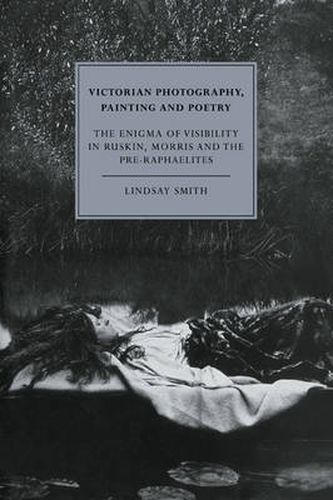Readings Newsletter
Become a Readings Member to make your shopping experience even easier.
Sign in or sign up for free!
You’re not far away from qualifying for FREE standard shipping within Australia
You’ve qualified for FREE standard shipping within Australia
The cart is loading…






This book explores the intersections between Victorian literature, painting and photography. Taking as a starting point mid-nineteenth-century developments in the understanding of visual perception, Lindsay Smith examines the representation of a pervasive desire for a literal understanding of the process of seeing and perceiving. This is played out in the aesthetic theory of John Ruskin, the early poetry of William Morris, paintings of the Pre-Raphaelites, and in the photographic technique of combination printing. She demonstrates how the novel presence of the camera in nineteenth-century culture not only transforms acts of looking, but also affects major social, aesthetic and philosophical categories. By exploring the intricacies of photographic discourse she shows how Ruskin and Morris produce a critique of the earlier Cartesian perspectival model of vision.
$9.00 standard shipping within Australia
FREE standard shipping within Australia for orders over $100.00
Express & International shipping calculated at checkout
This book explores the intersections between Victorian literature, painting and photography. Taking as a starting point mid-nineteenth-century developments in the understanding of visual perception, Lindsay Smith examines the representation of a pervasive desire for a literal understanding of the process of seeing and perceiving. This is played out in the aesthetic theory of John Ruskin, the early poetry of William Morris, paintings of the Pre-Raphaelites, and in the photographic technique of combination printing. She demonstrates how the novel presence of the camera in nineteenth-century culture not only transforms acts of looking, but also affects major social, aesthetic and philosophical categories. By exploring the intricacies of photographic discourse she shows how Ruskin and Morris produce a critique of the earlier Cartesian perspectival model of vision.